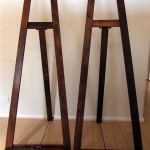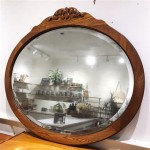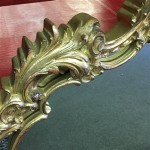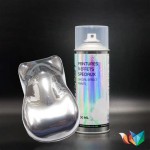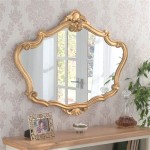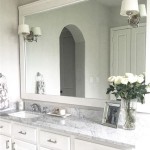How to Convert a Glass Mirror: Repurposing and Upcycling Techniques
Converting a glass mirror opens up a world of creative possibilities, allowing for the repurposing of an existing item into something new and functional. This process involves careful removal of the reflective backing, leaving a clear glass pane ready for various applications. Whether aiming for a vintage aesthetic or a modern touch, converting a mirror can be a rewarding DIY project.
Essential Tools and Materials
Before embarking on the mirror conversion, gathering the necessary tools and materials is crucial for a smooth and efficient process. The following items are typically required:
- Heavy-duty gloves
- Safety goggles
- Dust mask
- Razor blade scraper or paint scraper
- Heat gun or hairdryer (optional)
- Spray bottle filled with warm water and dish soap
- Drop cloths or newspapers
- Rubbing alcohol or glass cleaner
- Putty knife (optional)
Preparing the Work Area
Creating a safe and organized workspace is paramount. This preparation prevents accidents and ensures the process remains manageable. Key steps include:
- Laying down drop cloths or newspapers to protect the work surface.
- Ensuring adequate ventilation to dissipate any fumes from cleaning solutions or heated mirror backing.
- Wearing safety goggles, gloves, and a dust mask to protect against glass shards and chemical fumes.
Removing the Mirror Backing
The removal of the mirror backing is the core of the conversion process. Several methods exist, each with its benefits and drawbacks.
Method 1: Heat Application
Applying heat can soften the adhesive holding the backing, making it easier to remove. A heat gun or hairdryer can be used for this purpose. Directing the heat evenly across the mirror's surface is important to avoid cracking the glass. Once the backing is softened, a razor blade scraper or putty knife helps lift and peel it away.
Method 2: Soaking and Scraping
This method involves saturating the mirror backing with a solution of warm water and dish soap. Allowing the solution to soak for a period, often several hours, weakens the adhesive. Subsequently, a razor blade scraper can be used to carefully remove the backing. Multiple applications of the soapy water and scraping may be necessary for stubborn backing.
Method 3: Commercial Strippers
Commercial paint strippers can effectively remove mirror backing. Following the manufacturer's instructions is critical when using these products, as they often contain harsh chemicals. Proper ventilation and protective gear are essential when using this method.
Cleaning the Glass
Once the backing is removed, cleaning the glass thoroughly is essential for achieving a clear and pristine surface. This typically involves the following steps:
- Washing the glass with warm water and dish soap to remove any residual adhesive or cleaning solution.
- Using rubbing alcohol or glass cleaner to remove any remaining streaks or smudges.
- Drying the glass thoroughly with a lint-free cloth.
Repurposing Ideas
With the clear glass pane now available, a multitude of repurposing options become possible. Some popular applications include:
- Creating a custom picture frame.
- Building a greenhouse window or terrarium.
- Using the glass as a tabletop protector.
- Incorporating the glass into a mosaic art project
- Fashioning a dry-erase board.
Safety Precautions
Throughout the entire conversion process, prioritizing safety is paramount. This includes:
- Always wearing appropriate safety gear, including gloves, goggles, and a dust mask.
- Disposing of broken glass and chemical waste responsibly.
- Working in a well-ventilated area.
- Exercising caution when handling sharp tools like razor blades and putty knives.

How To Turn Ordinary Glass Into An Antique Mirror

How To Make A Mirror With Pictures Wikihow

How To Turn Ordinary Glass Into An Antique Mirror

How To Quickly Turn Glass Mirror In 4 Steps Spray Paint Home Decor Ideas

How To Make A Mirror With Pictures Wikihow

How To Make A Mirror With Pictures Wikihow

Discover Our Glass To Mirror Converter In Spray Format Mtn News

How To Turn Ordinary Glass Into Looking Interior Frugalista

Easy Ways To Make A One Sided Mirror With Pictures Wikihow

How To Turn Glass Into An Antique Mirror The Morris Mansion

